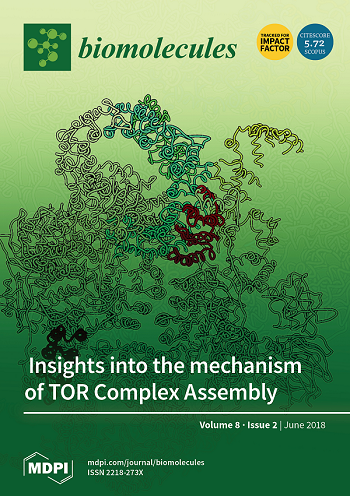A Nanobody of PEDV S1 Protein: Screening and Expression in Escherichia coli
IF 4.8
2区 生物学
Q1 BIOCHEMISTRY & MOLECULAR BIOLOGY
引用次数: 0
Abstract
Porcine epidemic diarrhea virus (PEDV) has caused significant economic losses to the pig farming industry in various countries for a long time. Currently, there are no highly effective preventive or control measures available. Research into the pathogenic mechanism of PEDV has shown that it primarily causes infection by binding the S protein to the CD13 (APN) receptor on the membrane of porcine intestinal epithelial cells. The S1 region contains three neutralization epitopes and multiple receptor-binding domains, which are closely related to viral antigenicity and ad-sorption invasion. Nanobodies are a type of single-domain antibody that have been discovered in recent years. They can be expressed on a large scale through prokaryotic expression systems, which makes them cost-effective, stable, and less immunogenic. This study used a phage display library of nanobodies against the PEDV S1 protein. After three rounds of selection and enrichment, the DNA sequence of the highly specific nanobody S1Nb1 was successfully obtained. To obtain soluble nanobody S1Nb1, its DNA sequence was inserted into the vector Pcold and a solubility-enhancing SUMO tag was added. The resulting recombinant vector, Pcold-SUMO-S1Nb1, was then transformed into E. coli BL21(DE3) to determine the optimal expression conditions for the nanobody. Following purification using Ni-column affinity chromatography, Western blot analysis confirmed the successful purification of S1Nb1 carrying the solubility-enhancing tag. ELISA results demonstrated a strong affinity between the S1Nb1 nanobody and PEDV S1 protein.PEDV S1 蛋白的纳米抗体:大肠杆菌中的筛选和表达
长期以来,猪流行性腹泻病毒(PEDV)给各国养猪业造成了巨大的经济损失。目前,还没有非常有效的预防和控制措施。对 PEDV 致病机制的研究表明,它主要通过 S 蛋白与猪肠上皮细胞膜上的 CD13(APN)受体结合而引起感染。S1 区域包含三个中和表位和多个受体结合域,与病毒的抗原性和吸附侵袭密切相关。纳米抗体是近年来发现的一种单域抗体。它们可以通过原核表达系统大规模表达,因此成本低、稳定性好、免疫原性低。这项研究使用了针对 PEDV S1 蛋白的纳米抗体噬菌体展示文库。经过三轮筛选和富集,成功获得了高特异性纳米抗体 S1Nb1 的 DNA 序列。为了获得可溶性纳米抗体 S1Nb1,我们将其 DNA 序列插入载体 Pcold 中,并添加了可溶性增强 SUMO 标签。然后将得到的重组载体 Pcold-SUMO-S1Nb1 转化到大肠杆菌 BL21(DE3)中,以确定纳米抗体的最佳表达条件。使用镍柱亲和层析法纯化后,Western 印迹分析证实成功纯化了携带溶解度增强标签的 S1Nb1。酶联免疫吸附试验结果表明,S1Nb1 纳米抗体与 PEDV S1 蛋白之间具有很强的亲和力。
本文章由计算机程序翻译,如有差异,请以英文原文为准。
求助全文
约1分钟内获得全文
求助全文
来源期刊

Biomolecules
Biochemistry, Genetics and Molecular Biology-Molecular Biology
CiteScore
9.40
自引率
3.60%
发文量
1640
审稿时长
18.28 days
期刊介绍:
Biomolecules (ISSN 2218-273X) is an international, peer-reviewed open access journal focusing on biogenic substances and their biological functions, structures, interactions with other molecules, and their microenvironment as well as biological systems. Biomolecules publishes reviews, regular research papers and short communications. Our aim is to encourage scientists to publish their experimental and theoretical results in as much detail as possible. There is no restriction on the length of the papers. The full experimental details must be provided so that the results can be reproduced.
文献相关原料
| 公司名称 | 产品信息 | 采购帮参考价格 |
|---|
 求助内容:
求助内容: 应助结果提醒方式:
应助结果提醒方式:


